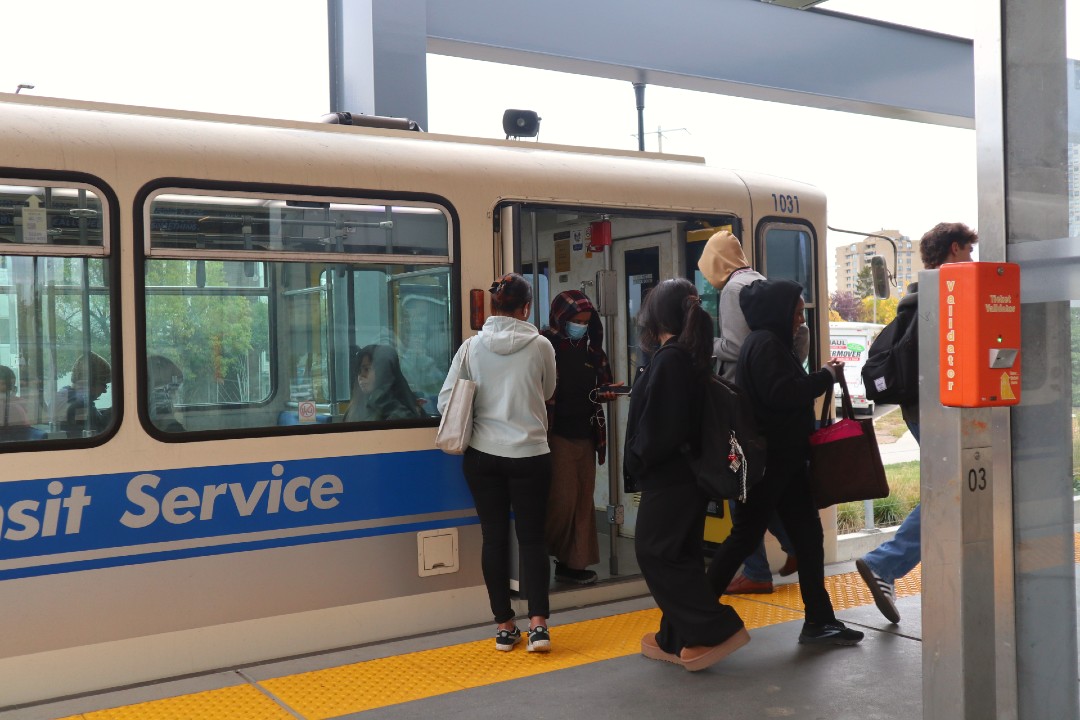This week, council committees will meet to discuss gaps in the operating and capital budgets, changes to the Old Strathcona public realm, and what transit needs to serve a growing population.
There is a community and public services committee meeting scheduled on Oct. 7 and an urban planning committee meeting scheduled on Oct. 8. There is an executive committee meeting scheduled on Oct. 9 and a utility committee meeting scheduled on Oct. 11.
Here are key items on this week's agenda:
- A report outlines how the shortfall in the city's operating and capital budgets is exacerbated by regional residents who benefit from Edmonton's services but do not pay taxes. Nearly a third of the vehicles on Edmonton roadways are driven by people who live in other cities or towns and thus don't pay property taxes to Edmonton, the report said. Edmonton funds policing, cultural centres, recreation centres, and other facilities and services that are used by regional residents. Other factors have widened the fiscal gap, like Edmonton's decreased share of industrial properties across the region, rapid population growth, and inflation. To help narrow the fiscal gap, administration recommends the city grow its non-residential tax base, explore the sale of municipal assets, and prioritize services. Council's executive committee is scheduled to discuss the report on Oct. 9.
- Council's urban planning committee is set to review the proposed Old Strathcona Public Realm Strategy on Oct. 8. The strategy suggests the city build wider sidewalks on Whyte Avenue, turn parking lots into parks, and pedestrianize 83 Avenue, among other changes. Paths for People, a group that advocates for pedestrians and cyclists, said the changes will bring "much-needed improvements to the aging and deteriorating infrastructure in Old Strathcona." The main concern about the plan that the city heard from residents is about parking. The city said there are currently more than 3,500 parking stalls in the project area. If the plan was fully implemented, there would be 2,900 stalls as the city parking lot leased to the Old Strathcona Farmers' Market could become a park and parking spots along Whyte Avenue could be reduced. To alleviate parking issues, the city proposes to sequence the removal of parking stalls with the improvement of cycling and transit infrastructure and to establish a wayfinding system for people to locate parking. Currently, there is no funding allocated to implement the strategy, and the document is meant to guide decisions about future capital projects.
- Administration forecasts the Edmonton Transit Service will need an additional 4,750 service hours by 2026 to serve the city's growing population. To create the additional service, $16 million would be required for operating costs, as well as from $90 million to $159 million for 99 new buses. Some neighbourhoods, including Big Lake, Cavanagh, Keswick, and Glenridding Ravine, could be upgraded from on-demand transit to conventional service, because population and transit ridership have increased in recent years. Administration said it plans to apply for funding from the new Canada Public Transit Fund to help address the service gap. Decisions won't be made until the fall 2025 supplemental budget adjustment.

Edmonton Transit Service requires an additional $16 million in annual operations funding to serve the city's growing population, administration said. (Stephanie Swensrude)
Here are some other items on the agenda:
- Pilot programs dedicated to increasing safety and security in Chinatown have ended, but the city said it is committed to maintaining a visible presence in the community through existing resources. A report scheduled to be presented to council's executive committee outlines progress made on the city's Chinatown Strategy. Administration said it will focus on supporting approved projects, engaging community members, and distributing money from the Chinatown Vibrancy Fund. The Chinatown Transformative Collaboration Society produced the Dragon Festival in July with help from the Chinatown Vibrancy Fund, and more than 2,000 people attended, boosting Chinatown's visibility. Administration said relationships between stakeholders have improved, leading to better collaboration on projects this year.
- Council's executive committee is set to discuss designating the Crawford Residence at 10352 127 Street NW in the Westmount neighbourhood as a municipal historic resource. The property is an example of Storybook-influenced architecture in the Groat Estates area. If it is designated a historic resource, the city will pay the property owner up to $49,800 to rehabilitate historic elements of the home. If executive committee approves the decision, it will go to city council for further discussion.
- Administration said it has reviewed GEF Seniors Housing's financial statements and has no concerns. The city funds about $4.9 million, or about 14%, of GEF's operating budget. GEF had requisitioned $219,000 from the city to cover an operating budget deficit in 2023, and does not forecast a deficit for 2024. The non-profit plans to establish a capital reserve to fund building maintenance, and will ask council for funding during the 2027-2030 budget deliberations.
- Needed upgrades to the Edmonton Waste Management Centre's water distribution system will cost about $17.25 million, according to a report that is scheduled to be presented to council's utility committee. The upgrades were budgeted for in the 2023-2026 budget deliberations, so no new funding would be required. If the utility committee recommends proceeding with the project, council will vote on it at a future meeting.
- Council's utility committee will review EPCOR's application to set wastewater utility rates for 2025-2027. Overall, administration said it finds EPCOR's application reasonable, but identified key issues that require further discussion.
- Council's community and public services committee is scheduled to meet in private to discuss event sponsorships on Oct. 7.
- Council's utility committee will meet in private to discuss a contractual update.
Meetings stream live on YouTube on the Chamber channel and River Valley Room channel.
